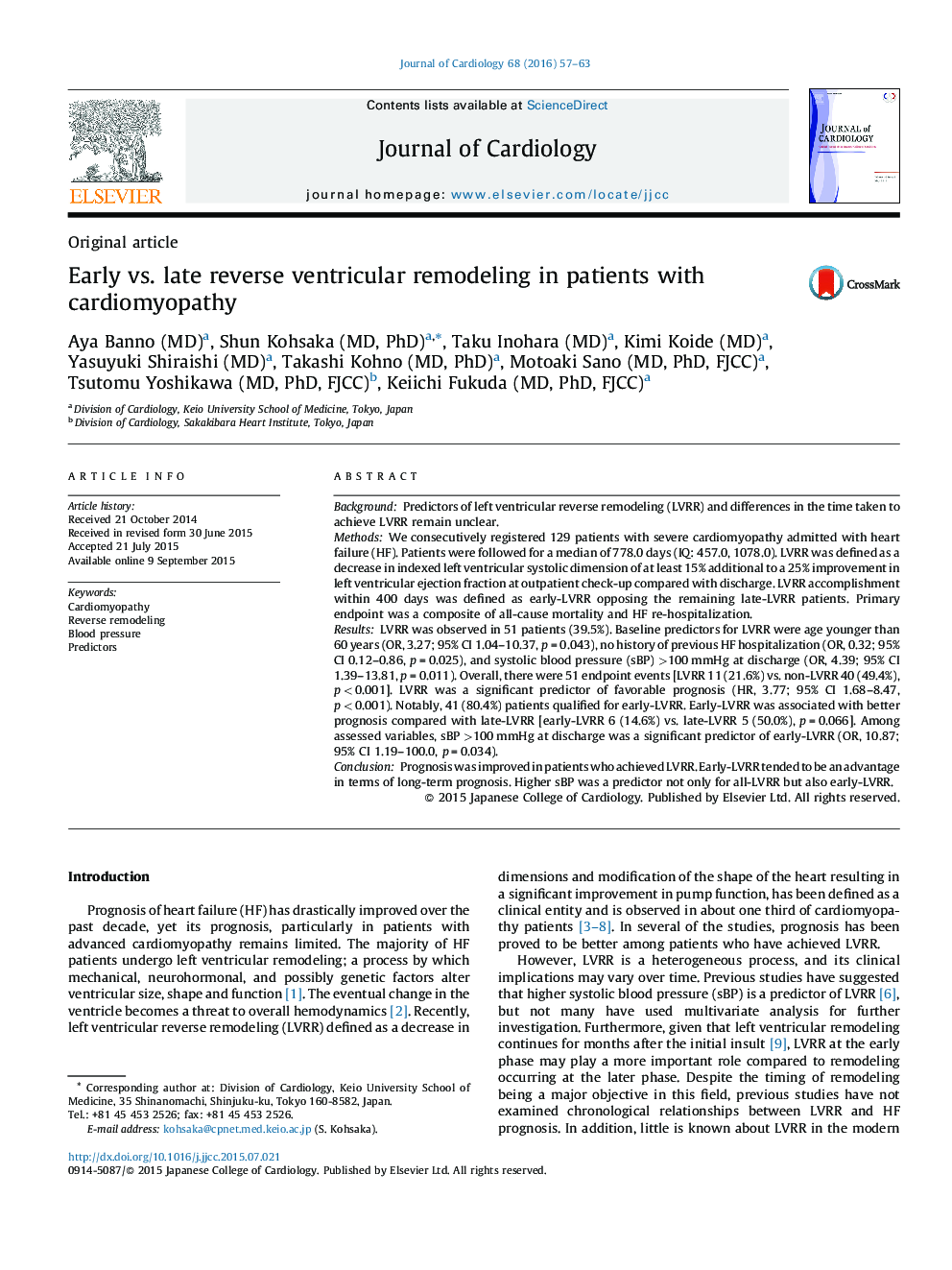| Article ID | Journal | Published Year | Pages | File Type |
|---|---|---|---|---|
| 2962756 | Journal of Cardiology | 2016 | 7 Pages |
BackgroundPredictors of left ventricular reverse remodeling (LVRR) and differences in the time taken to achieve LVRR remain unclear.MethodsWe consecutively registered 129 patients with severe cardiomyopathy admitted with heart failure (HF). Patients were followed for a median of 778.0 days (IQ: 457.0, 1078.0). LVRR was defined as a decrease in indexed left ventricular systolic dimension of at least 15% additional to a 25% improvement in left ventricular ejection fraction at outpatient check-up compared with discharge. LVRR accomplishment within 400 days was defined as early-LVRR opposing the remaining late-LVRR patients. Primary endpoint was a composite of all-cause mortality and HF re-hospitalization.ResultsLVRR was observed in 51 patients (39.5%). Baseline predictors for LVRR were age younger than 60 years (OR, 3.27; 95% CI 1.04–10.37, p = 0.043), no history of previous HF hospitalization (OR, 0.32; 95% CI 0.12–0.86, p = 0.025), and systolic blood pressure (sBP) >100 mmHg at discharge (OR, 4.39; 95% CI 1.39–13.81, p = 0.011). Overall, there were 51 endpoint events [LVRR 11 (21.6%) vs. non-LVRR 40 (49.4%), p < 0.001]. LVRR was a significant predictor of favorable prognosis (HR, 3.77; 95% CI 1.68–8.47, p < 0.001). Notably, 41 (80.4%) patients qualified for early-LVRR. Early-LVRR was associated with better prognosis compared with late-LVRR [early-LVRR 6 (14.6%) vs. late-LVRR 5 (50.0%), p = 0.066]. Among assessed variables, sBP >100 mmHg at discharge was a significant predictor of early-LVRR (OR, 10.87; 95% CI 1.19–100.0, p = 0.034).ConclusionPrognosis was improved in patients who achieved LVRR. Early-LVRR tended to be an advantage in terms of long-term prognosis. Higher sBP was a predictor not only for all-LVRR but also early-LVRR.
